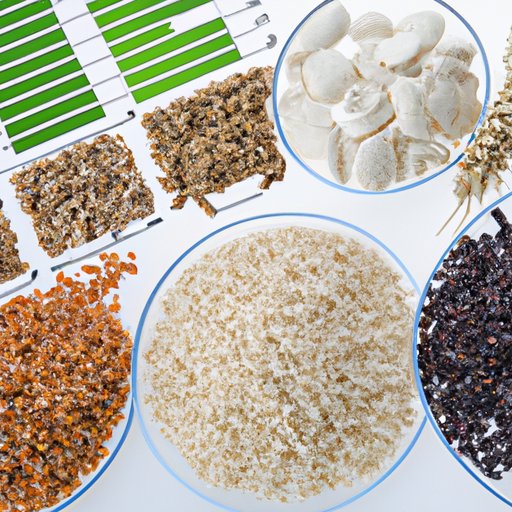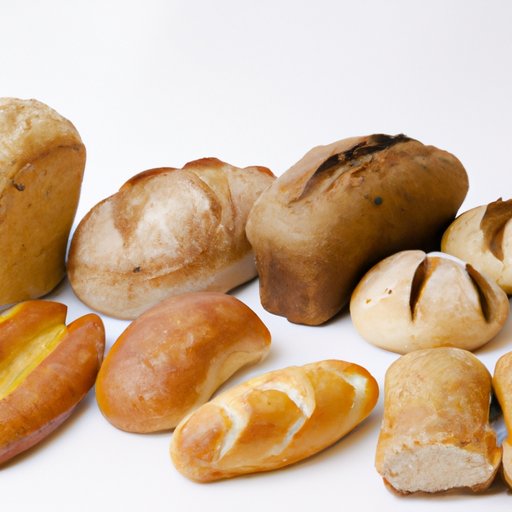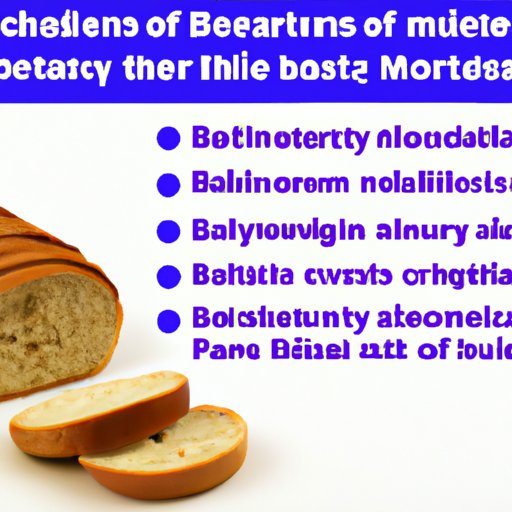Introduction: Do We Need Bread in Our Diet?
Bread has been an integral part of many cultures’ diets for centuries, but in recent years there has been some debate over its nutritional value. Is bread really necessary to maintain a healthy diet? In this article we will explore the health benefits and risks of eating bread, as well as how to select the right type for your needs.
Exploring the Impact of Gluten-Free Diets on Bread Consumption
Gluten intolerance and celiac disease are two medical conditions that have become increasingly common in recent years. People with these conditions must avoid foods containing gluten, which is a type of protein found in wheat, barley, and rye. This means that they must avoid most types of bread, as well as other foods such as pasta, beer, and certain baked goods.
The elimination of gluten from the diet can help reduce symptoms associated with these conditions, including abdominal pain, bloating, diarrhea, and fatigue. However, it is important to note that while a gluten-free diet may help reduce symptoms, it is not a cure for either condition. Additionally, some people may find that eliminating gluten causes them to miss out on important nutrients that can be found in whole grains.
There are pros and cons to following a gluten-free diet. On one hand, it can help reduce symptoms associated with gluten intolerance and celiac disease. On the other hand, it can lead to nutrient deficiencies if not done correctly. It is important to speak to a doctor or nutritionist before making any major dietary changes.

Examining the Role of Whole Grains in a Balanced Diet
Whole grains are an important part of a balanced diet. They are packed with vitamins, minerals, fiber, and other essential nutrients that can help promote overall good health. Whole grains include oats, quinoa, brown rice, barley, and buckwheat, among others.
Incorporating whole grains into your diet can help reduce the risk of chronic diseases such as heart disease and diabetes, as well as improve digestion and promote weight loss. Additionally, they are high in fiber, which can help keep you feeling full longer and regulate blood sugar levels. When selecting whole grains, look for products that list “whole grain” as the first ingredient.
Investigating the Role of Carbohydrates in Nutrition
Carbohydrates are an essential part of a healthy diet. They provide energy for the body and are found in a variety of foods, including fruits, vegetables, grains, and dairy products. There are two main types of carbohydrates: simple and complex. Simple carbohydrates are found in foods like white bread, candy, and soda, while complex carbohydrates are found in foods like whole wheat bread, brown rice, and beans.
Eating carbohydrates can help boost energy levels and stabilize blood sugar levels. Additionally, complex carbohydrates can help reduce cholesterol levels and the risk of heart disease. It is important to note, however, that consuming too many simple carbohydrates can lead to weight gain and an increased risk of diabetes.

Looking at the Different Types of Bread Available and Their Nutritional Value
There are many different types of bread available, each with its own unique nutritional value. Whole wheat bread is a great source of fiber and B vitamins, while rye bread is high in iron and other minerals. Sourdough bread is made with a fermented starter, which makes it easier to digest than other types of bread. Other types of bread include pita, bagels, naan, and focaccia.
When selecting bread, look for options that are made with whole grains and are low in added sugars, sodium, and unhealthy fats. Additionally, check the label for the amount of fiber, as this can vary widely between different types of breads. Lastly, opt for breads with few ingredients, as this indicates that the bread is more likely to be natural and unprocessed.

Conclusion: Summarizing the Health Benefits and Risks of Eating Bread
Bread can be a nutritious and delicious addition to a balanced diet, as long as it is consumed in moderation. People with gluten intolerance or celiac disease should follow a strict gluten-free diet, as this can help reduce symptoms associated with these conditions. Eating whole grains can provide numerous health benefits, including reducing the risk of chronic diseases and promoting weight loss. Additionally, incorporating carbohydrates into your diet can help boost energy levels and regulate blood sugar levels.
When selecting bread, look for options that are made with whole grains and are low in added sugars, sodium, and unhealthy fats. Additionally, check the label for the amount of fiber and opt for breads with few ingredients. By doing so, you can ensure that you are getting the most nutritional bang for your buck.
In conclusion, bread can certainly be part of a healthy diet, as long as it is consumed in moderation and the right type is selected. Following a gluten-free diet can help reduce symptoms associated with gluten intolerance and celiac disease, while eating whole grains can provide numerous health benefits. Additionally, incorporating carbohydrates into your diet can help boost energy levels and regulate blood sugar levels. Ultimately, it is important to understand the nutritional value of different types of bread in order to make informed decisions about what to eat.
(Note: Is this article not meeting your expectations? Do you have knowledge or insights to share? Unlock new opportunities and expand your reach by joining our authors team. Click Registration to join us and share your expertise with our readers.)
